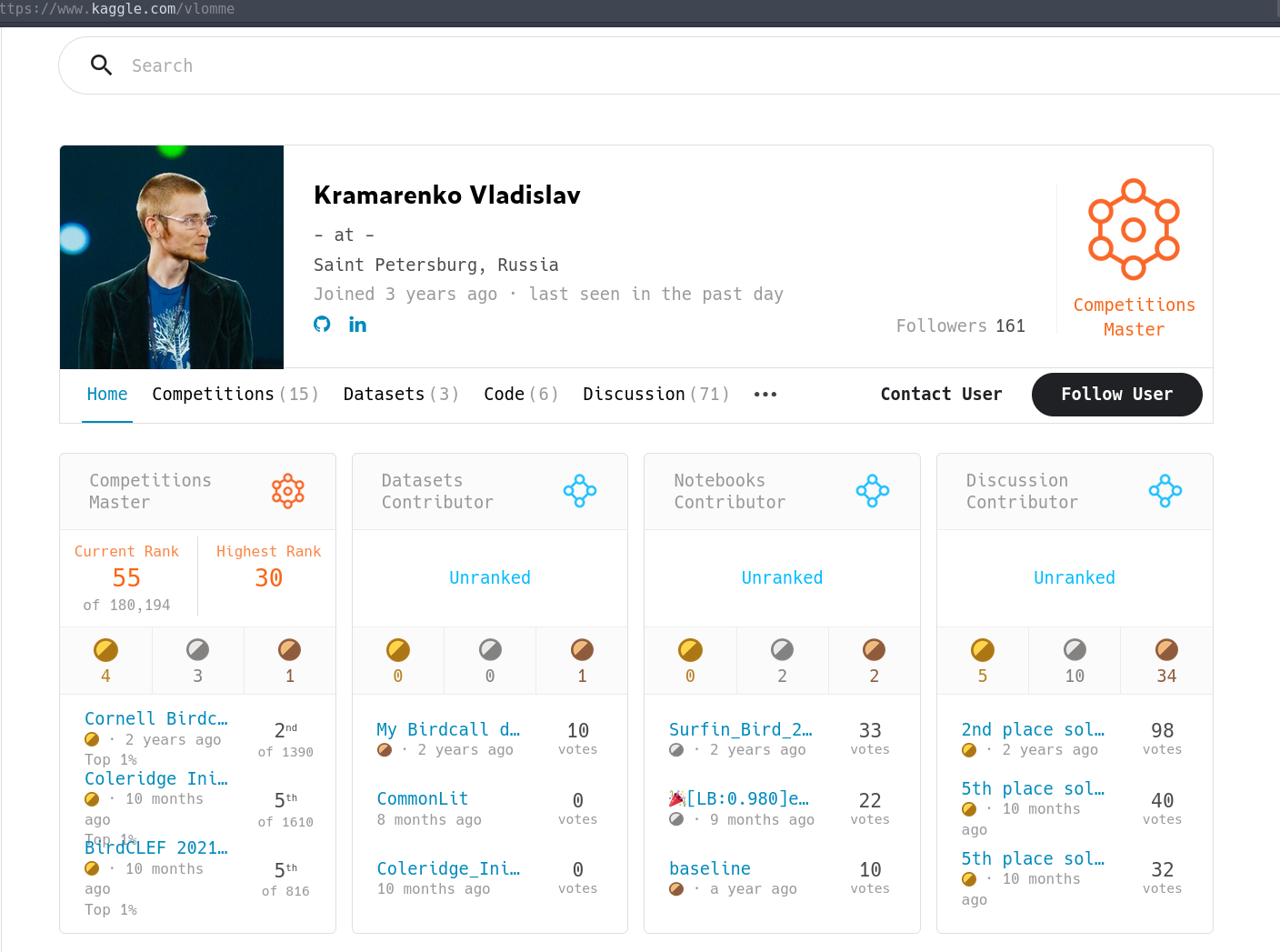Blog of science and life
Kaggle Bird Classification with sound
Problem
As the “extinction capital of the world,” Hawai'i has lost 68% of its bird species, the consequences of which can harm entire food chains. Researchers use population monitoring to understand how native birds react to changes in the environment and conservation efforts. But many of the remaining birds across the islands are isolated in difficult-to-access, high-elevation habitats. With physical monitoring difficult, scientists have turned to sound recordings. Known as bioacoustic monitoring, this approach could provide a passive, low labor, and cost-effective strategy for studying endangered bird populations.
Current methods for processing large bioacoustic datasets involve manual annotation of each recording. This requires specialized training and prohibitively large amounts of time. Thankfully, recent advances in machine learning have made it possible to automatically identify bird songs for common species with ample training data. However, it remains challenging to develop such tools for rare and endangered species, such as those in Hawai'i.
The Cornell Lab of Ornithology's K. Lisa Yang Center for Conservation Bioacoustics (KLY-CCB) develops and applies innovative conservation technologies across multiple ecological scales to inspire and inform the conservation of wildlife and habitats. KLY-CCB does this by collecting and interpreting sounds in nature and they've joined forces with Google Bioacoustics Group, LifeCLEF, Listening Observatory for Hawaiian Ecosystems (LOHE) Bioacoustics Lab at the University of Hawai'i at Hilo, and Xeno-Canto for this competition.
In this competition, you’ll use your machine learning skills to identify bird species by sound. Specifically, you'll develop a model that can process continuous audio data and then acoustically recognize the species. The best entries will be able to train reliable classifiers with limited training data.
If successful, you'll help advance the science of bioacoustics and support ongoing research to protect endangered Hawaiian birds. Thanks to your innovations, it will be easier for researchers and conservation practitioners to accurately survey population trends. They'll be able to regularly and more effectively evaluate threats and adjust their conservation actions.
Thinking
After reading, I have no clue what to do. Thus I have to learn from the others. I look up from the leaderboard, and almost all of them do not have any public code. Fair enough, since this is a competition with big reward.
But then I found someone interesting.

Do notice he has Code(6). And we see one of his old notebook:
https://www.kaggle.com/code/vlomme/surfin-bird-2nd-place
Seem like this guy understand bird sound and deep learning. And at the time of this writing, he is the second place of the leaderboard.
So now to have a place in this competition, we learn from him first. Then improve later.